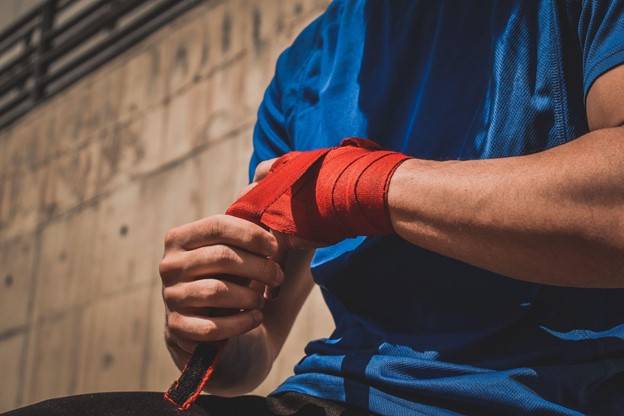
March 2022. This article is independently written by Shelby Golding. All opinions given are hers. Shelby has been certified as a personal trainer and nutritional specialist since 2007. In 2008, she found her passion for writing about these topics and hasn't looked back.

The most common injuries include sprains and strains, swollen muscles, shin splints, rotator cuff and knee injuries, fractures, and dislocations. Some people are referred to as being "injury-prone," but the causes of injuries vary widely. Common reasons people get injured include stress, anxiety, age, weight, and profession. However, most injuries can be prevented, especially those that are due to overuse.
In the days following an injury – after the pain has subsided a bit and you've spoken with your doctor – you may start wondering about the following steps to a faster, natural recovery. This article will explore the effectiveness of the commonly prescribed RICE and MEAT injury protocols and other techniques to recover naturally from your injury.
Rest, Ice, Compression, Elevation
The first step is rest. Keeping the injured area still prevents further stress or strain and allows the body to begin the healing process. Next, ice brings down swelling and reduces any pain or inflammation from the injury. Compression instigates healthy circulation and prevents the creation of scar tissue that might prevent smooth movement in the future. Finally, you keep the area elevated to prevent swelling and limit bleeding.
Ice, compression, and elevation all focus on reducing swelling. But swelling is helpful to injury recovery. When an area of the body is swollen, it indicates an increased flow of white blood cells and fluid to the site. Over time, swelling can distort and distend the tissues, affecting joint movement. But swelling isn't necessarily the enemy of healing.
RICE is based on the idea that in the time directly following the injury, you should keep the injured area immobile while it recovers. However, more studies support movement than rest during recovery.
Movement, Exercise, Analgesics, Treatment

Movement helps the body to recover naturally by encouraging blood flow, instigating lymph movement, and bringing blood and oxygen to the area to help it heal. You should start with gentle movements and try not to cause the area any unnecessary pain or strain.
Modify Your Diet
One of the best tools we have against chronic pain is our diet. Our diet can either cause or reverse systemic inflammation.
Think of systemic inflammation in the body like pollution in a river. The river might be polluted by runoff from factories, pollution from the surrounding communities, and maybe even a dead animal floating downstream. On their own, each of these factors will make the river more and more polluted. You need to address all of them to restore the river to health.
The same is true of your body. Inflammation could be caused by an injury, disease, poor diet, lack of exercise, or poor sleep. But while your injury might be the cause of inflammation in an area, a poor diet will exacerbate it. Over time, inflammation will spread throughout the body the same way pollution spreads in the river.
Processed food, sugars, red meat, and refined carbohydrates can cause systemic inflammation that aggravates an injury. Limiting the amount of these foods will help your body recover faster and lessen your chances of developing chronic inflammation in the future.
A healthy diet consists of mostly fruits, vegetables, whole grains, lean meats, and fiber. In addition, try to add in as many anti-inflammatory foods as possible – the Mediterranean Diet is a great diet to reduce system inflammation.
Recover Naturally
Be sure to consult with your doctor if you’ve recently been injured or have any questions about your current treatment.
And if pain is slowing you down, don’t let it take away from your time with loved ones this spring – just apply your Kailo pain patch and breathe a sigh of relief. A recent clinical study showed that Kailo is more effective than other prescription and over the counter medications, with no side effects!
Disclaimer: Kailo should not be used if you have a pacemaker or if you are pregnant. Always consult your doctor or health care professional before using Kailo.






